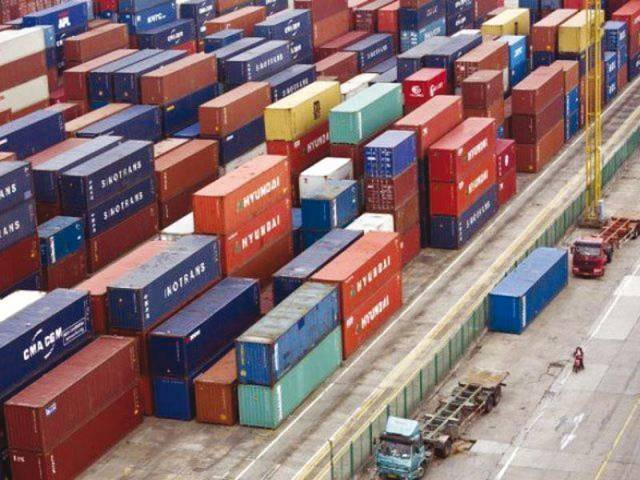In absence of payment mechanism, Pakistan loses Iran market
Due to US sanctions trade was conducted through alternative payment mechanisms of limited scope

Due to US sanctions trade was conducted through alternative payment mechanisms of limited scope
PHOTO:REUTERS
International sanctions, particularly those imposed by the US and European Union in 2010, targeted Iran’s banks. The sanctions prevented Pakistani banks from doing business with their Iranian counterparts including the opening of letters of credit (LC), which is the most credible method for carrying out international trade transactions.
Trade was conducted through alternative payment mechanisms of limited scope, such as cash and to a certain extent through barter.
The absence of banking channels cast a pall over Pakistan-Iran trade, which nosedived from $1.16 billion in 2009-10 to $318.69 million in 2015-16. Pakistan’s exports to Iran fell from $207.19 million to $35.48 million while imports from Iran decreased from $962.13 million to $283.21 million over this period, according to data compiled by the Pakistan Bureau of Statistics.
Five Pak-Iran goods train bogies derail near Chagai
The July 2015 nuclear deal between Iran and world powers paved the way for the lifting of most of the international sanctions on Tehran and generated expectations for the revival of Pakistan’s trade with Iran.
However, there was a bee in the bonnet. Some continuing US sanctions barred American companies from doing business with Iranian banks. A concession was granted to the aviation sector to enable the US giant Boeing to sell aircraft to Iran.
The LC mechanism involves not only banks in the importing and exporting countries, but also an intermediary or correspondent bank, normally the US or EU-based, through which transfer of funds takes place. Since most of Pakistan’s international trade transactions are denominated in American dollars, Pakistani banks have continued to shy away from entertaining Iran-related LCs fearing a backlash from Washington.
The Banking and Payment Arrangement (BPA) between central banks of Iran and Pakistan, signed in April 2017, represented an attempt to see about the LC problem. The BPA provides that authorised banks in the two countries will undertake trade transactions denominated in euro or yen on a reciprocal basis. The two central banks will act as intermediary banks.
The agreement left it to the banks in Pakistan to present themselves for carrying out transactions with their Iranian counterparts.
However, Pakistani banks remain reluctant to do business with Iranian banks. Adverse views of US President Donald Trump about the Iran nuclear agreement have also made the Pakistani banks more cautious about opening LCs for Iran.
Not surprisingly, the bilateral trade has not taken off in the wake of the lifting of sanctions on Iran. In 2016-17, the bilateral trade was $300 million including $29 million of exports from Pakistan and $271 million of imports from Iran.
Indian example
Despite the sanctions, some other Iran’s trading partners, notably India, were able to put in place an alternative payment mechanism and thus they were able to sustain their trade with Iran.
The payment mechanism set up by India and Iran was a blend of barter and normal banking channels. Iran opened an Indian rupee (INR) account in a small bank in India. The payment for Indian imports from Iran, which mainly consisted of crude oil, was deposited in the account.
When Indian exporters sold merchandise, which comprised mainly rice, chemicals and textiles, to Iran, they received their payment from the balances held in that account. The arrangement worked and the India-Iran trade remained steady during the sanctions.
As per Comtrade data, from $13.6 billion in 2010 ($11.1 billion of Iranian exports and $2.5 billion of Indian exports), the bilateral trade increased to $15.6 billion in 2014 ($11.2 billion of Iranian exports and $4.2 billion of Indian exports), before falling to $9.3 billion in 2015 ($6.2 billion of Iranian exports and $3.1 billion of Indian exports).
After the sanctions were lifted, Indian oil importers started making payments to Iran in euros using the eurozone banking arrangements. However, Indian exporters were not allowed by the government to receive payment in euros fearing the sanctions may be re-imposed and they continued to receive payments in INR.
The bilateral trade went up to $10.6 billion in 2016 ($8.2 billion of Iranian exports and $2.4 billion of Indian exports). However, the two countries will have to find a way out as due to one-way transactions (Iranian exports), the INR account has almost been exhausted.
The new arrangement may take the form of reverting to the INR for both import and export transactions, using a European banking arrangement, or establishing bank branches on a reciprocal basis, which would eliminate the need for an intermediary bank.
Pakistan, Iran ‘must work for regional connectivity
Iranian rice market
During the sanctions, India secured a strong position for its rice in the Iranian market at the expense of Pakistan. Iran is one of the largest importers of rice.
In 2010, Iran imported $916 million worth of rice, out of which $369 million went to India, giving it a 40% share in the Iranian market. By 2014, Indian share in Iran’s rice market had gone up to 89.51% ($1.28 billion in rice imports from India out of total Iranian imports of $1.43 billion).
The share of Indian rice in Iran rose further to 92% in 2015 ($729.71 million). In 2016, the Indian share came down to 72.82% ($503.02 million).
By contrast, Pakistan’s export of rice to Iran fell from $124.76 million in 2010 to $15.64 million in 2014 and further to $3.47 million in 2015 before rising to $8.48 million in 2016.
Thus between 2010 and 2016, the share of Pakistan’s rice in Iranian market went down from 13.62% to 1.22%. Being a water-scarce country, Iran is set to limit rice production, which will create a significant opportunity for rice exporting countries including Pakistan.
No foreign exchange
One reason why the SBP did not set up a payment mechanism similar to that of India was that it would have deprived Pakistan of foreign exchange as payment had to be made in local currency.
However, the flip side is that Pakistan almost lost an important market. The absence of banking channels also made Pakistan-Iran preferential trade arrangement (PTA), which dates back to 2006, virtually dysfunctional.
At present, Pakistan is negotiating a free trade agreement (FTA) with Iran. However, without putting in place a credible payment mechanism, the FTA’s fate will not be much different from that of the PTA.
The author is a columnist based in Islamabad
Published in The Express Tribune, April 9nd, 2018.
Like Business on Facebook, follow @TribuneBiz on Twitter to stay informed and join in the conversation.



















COMMENTS
Comments are moderated and generally will be posted if they are on-topic and not abusive.
For more information, please see our Comments FAQ